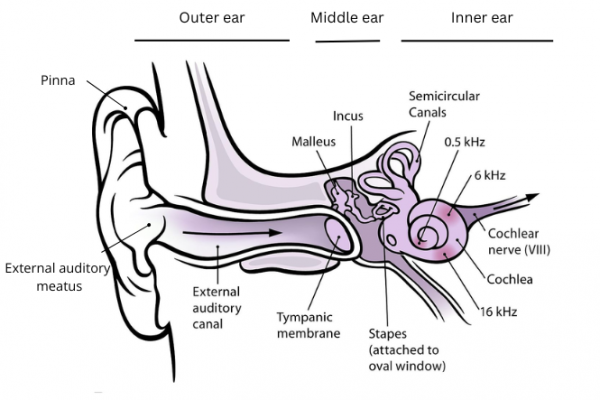A middle ear infection is the most common cause of ear pain. The infection often begins as a cold, flu, sinus infection or throat infection and spreads to the middle ear (otitis media) where it causes ear pain and often fever.
Other causes include:
- Colds – swelling in your nose and throat blocks your eustachian tube, stopping you from equalising pressure in your ear, which causes pain.
- Outer ear infection (otitis externa) – an infection or irritation of your outer ear can cause pain, itching and discharge from your ear. This is more common in swimmers. read more about otitis externa.
- Injury to your ear canal – a fingernail, cotton bud or any other object can cause injury to your ear canal causing ear pain.
- An object in the ear canal – young children may put small objects such as beads or toys in their ear canal. It can cause pain, especially if the object is sharp or pushed in a long way. For adults, cotton bud tips and insects are more likely.
- Abscess in your ear canal – an infection of a hair follicle in the ear canal can be very painful. It looks like a small red bump, and sometimes turns into a pimple.
- Airplane ear – if the ear canal is blocked, sudden increases in air pressure can cause the eardrum to stretch, resulting in severe ear pain. This usually happens during air travel, when the plane is coming down for landing, or when driving at high altitudes.
- Earwax build-up or blockage – a piece of hard earwax can cause ear discomfort. If the earwax is pushed deeper by cotton buds, the ear canal can become blocked and more painful. Read more about earwax build up and removal.
- Referred pain – referred pain is felt in your ear but is due to something that's not in your ear, such as a tonsil infection, tooth decay or mumps.

Image credit: Wikimedia Commons








